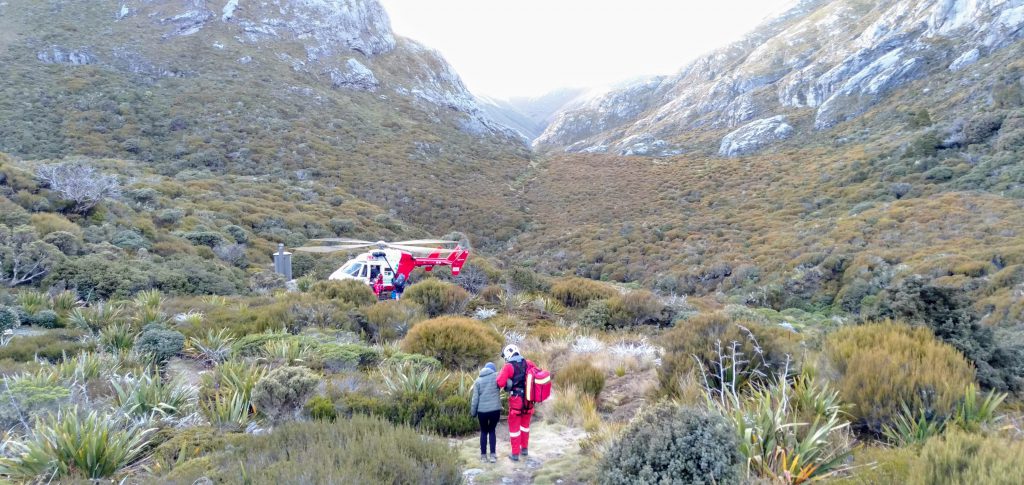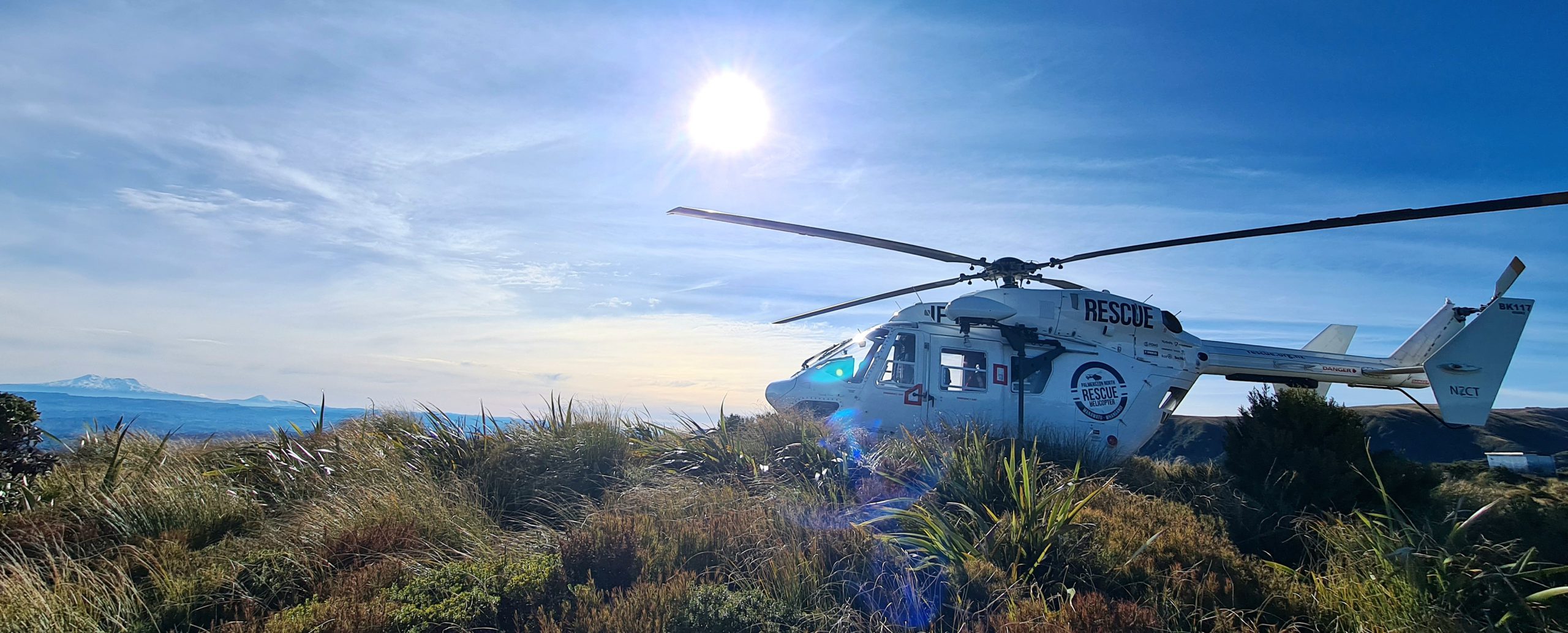[Emailed to all members on 24 June 2022]

Kia ora koutou
Last month two WTMC groups required helicopter evacuation from trips in the Ruahine Forest Park.
This email provides a brief overview of:
- What happened,
- What went well,
- Important reminders for trip leaders,
- When to use a club PLB
- What to do when you have decided to activate a PLB
- Further actions taken by WTMC to respond to future incidents
- Links to key policies and templates
WTMC encourages everyone to get in touch if they have concerns relating to safety on club trips, whether they are a trip leader or not. Trip leaders should also report any incidents or major risks identified on a club trip. For any matters relating to safety on club trips, please contact the Chief Guide (chiefguide@wtmc.org.nz).
If you would like to support safety on club trips and be our club emergency contact for a weekend, please contact the Emergency Contact Coordinator (emergencycontacts@wtmc.org.nz).
Ngā mihi nui, nā
Anne de Ferron
Chief Guide
What happened
In May 2022, two club trips went to the Ruahine Forest Park to two different huts. They stopped on the way together on Friday for dinner and started from the same road end. As the weekend developed, several members of the groups were afflicted with a vomiting and diarrhoea bug and became too unwell to walk out on Sunday.
- The M group activated the club PLB and a member of the group was helicoptered to Palmerston North Hospital.
- The EM group had cellphone reception. They were able to speak with the club emergency contact who put them in touch with the Rescue Coordination Center NZ (RCCNZ)*. A decision was made to send a helicopter. Two members of the group were flown out to the Palmerston North Hospital. The PLB was not activated
Other members in both groups also developed milder symptoms but did not require evacuation. Patients were released from the hospital on the same day, they were picked up in Palmerston North by the club van before heading back to Wellington. Everyone has now recovered.
*NB: If within cellphone reception, the usual process is to call 111, not the RCCNZ. However, as the RCCNZ were already liaising with the club emergency contact about the M group’s PLB activation, in this instance it was appropriate for the RCCNZ to arrange assistance for both groups and to contact them directly without Police involvement.

(Ruahine FP, May 2022) (Photo credit: PNRH)
What went well
- WTMC received positive feedback, from both the Rescue Coordination Center NZ and the helicopter pilot on how the situation was managed by trip leaders, the club emergency contact and other club members involved.
- Both groups were well prepared and made all the right calls, to look after the safety of the unwell trampers but also the group as a whole.
- There was nothing that could have been done to prevent the situation. The investigation by the District Health Board’s Public Health Officer concluded it was likely Norovirus – a highly contagious vomiting and diarrhea bug that is spread person to person, via contaminated surfaces and food. Due to the timing of onset of symptoms, it is likely the virus was contracted before the group shared any food together.
- The intention forms were completed correctly, the club emergency contact for that weekend efficiently provided these details to the RCCNZ, liaised with the groups, their relatives and the Committee to support the rescue.
- The club’s emergency systems and policies, as well as PLB registrations, were reviewed a few weeks prior to the incident and are up to date.
Important reminders for trip leaders
- Before your trip, fill in the intention form appropriately and send it to the emergency contact for that weekend. This information is essential to support rescue services if and when an incident occurs.
- Take a paper copy of the intentions form with you – so you know about any medications and medical conditions if someone feels unwell on the track.
- Before your trip, familiarise yourself with the club PLB you are taking with you and ensure you know how to activate it.
- At the start of the trip, discuss with the group who is carrying a PLB, first aid kit and any other emergency equipment, and trip members have the opportunity to share any medical information they think is important.
- Please remind group members to wash their hands with hand sanitiser or soap while on club trips, especially after using the loo and before cooking/eating. Hand hygiene is essential on club trips to avoid contaminating food, which can lead to vomiting, diarrhoea and severe dehydration.
- After your trip, do not hesitate to contact the Chief Guide to debrief if you feel the need to do so. This is essential if a major incident or risk was identified on the trip, but is also encouraged for minor issues or any questions you might have about a trip (e.g. unsure about a decision made, inappropriate grade for a tramp, difficulties with a person in your group, etc).
When to use a club PLB
PLBs should be activated in the following situations:
- There is grave or imminent danger to a member(s) of the tramping party or others encountered in the backcountry. Examples would be a major injury to a party member, or a party that has become dangerously trapped by rising floodwaters.
- A member(s) of the tramping party has become injured or unwell and will not be able to walk out. In these situations, consideration should be given to the timing of beacon activation; if they are not in danger of immediate harm or the situation worsening (e.g. by going into shock) waiting until daylight/improved weather may be recommended. Conversely, if there is the possibility for the situation to worsen during the night, activating the PLB while it is still light may be more appropriate than waiting to see if the situation resolves.
- Your tramping party is overdue to the extent that a search will be certainly launched for you (usually at least more than one night overdue). Note that being late out does not, in most circumstances, constitute a life-threatening situation. There is a club emergency contact system in place to deal with instances when a trip is overdue.
However, each situation is different. The trip leader should decide what is best for the particular circumstances, and discuss this with the rest of the group, particularly experienced trampers. The basic rule is “if in doubt, get them out”.
Before activating a PLB consider whether a mobile phone call to 111 is a practical option. If you are able to talk to the Police you will be able to provide context and receive advice.
What to do when you have decided to activate a PLB
- Activate the PLB following the manufacturer’s instructions (usually printed on the device).
- Position your beacon in a clear and open area, pointing the aerial vertically towards the sky, away from trees, buildings and mountains.
- While waiting for rescue you should look after injured person(s) and attempt to make the party as safe and comfortable as possible.
- Give consideration to clearing a helicopter landing site if possible, and making yourself visible with smoke, flares, reflectors, lights pointed downwards, bright colours or shaking trees.
- Take steps to ensure the wellbeing of all members of the tramping party; if the weather is poor, a helicopter may not be able to reach you, and you may have to wait until a Land Search and Rescue team can walk in to you.
- If a PLB is inadvertently activated, or it is activated and then decided it was not necessary to do so, do not deactivate it. If the signal from a PLB disappears a search will still be launched and it is preferable for SAR personnel to be able to track an actively transmitting beacon than have to search a wider general area.
- If a PLB is activated the trip leader (or leader’s delegate) must inform the club contact person when the group is safe, as soon as is realistically possible, and then provide a full written account of the incident to the Chief Guide.

(Kahurangi NP, April 2021)
Further actions taken by WTMC to respond to future incidents
A debrief took place with club members involved, to discuss and identify further actions needed:
- Electrolyte sachets will be added to club first aid kits to help manage dehydration, individuals should also carry their own.
- WTMC will run a training day for trip leaders and any other interested club members, with a focus on how to manage an emergency situation (decision making etc), PLB use and how the club’s emergency system works (date to be confirmed, feel free to email chiefguide@wtmc.org.nz to express interest),
- WTMC will seek SME advice on whether a “cheat sheet” could be developed to go with each club PLB, to assist trip leaders in an emergency situation and help with decision making.
- WTMC will establish a process for conducting debriefs following any club PLB activation, for the purpose of checking everyone involved is alright and for the club to learn from the situation.
The Committee will also discuss making a donation to the Palmerston North Rescue Helicopter Trust, with the option for individuals to also donate. If you would like to contribute, please contact secretary@wtmc.org.nz.
Links to key WTMC policies
For more information, please consult the club’s policies and procedures, and more specifically:
- PLB Policy when to use a club PLB, using private PLBs on club trips etc.
- Emergency procedures, if a club PLB is activated or a group is overdue (for Emergency contacts)
- Intention sheet template (for trip leaders to complete prior each trip and send to the Emergency Contact)
If you have any questions, please contact the Chief Guide (chiefguide@wtmc.org.nz) or the Emergency Contact Coordinator (emergencycontacts@wtmc.org.nz) .
